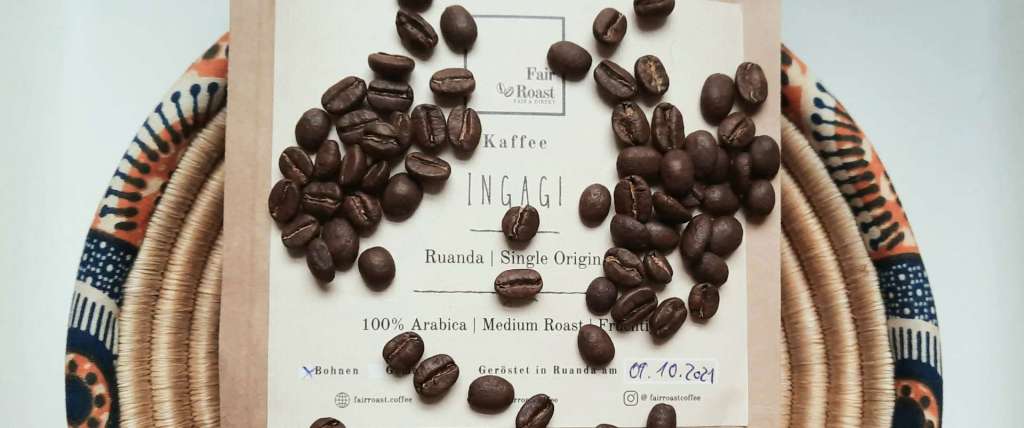cooperation
10% voucher for Fair Roast Coffee: Bunaa10
Coffee roasted in the country of origin
How fair is our coffee drinking? Unfortunately, the conventional coffee business often only operates greenwashing with its super dupa bio fair trade seal. In the niche area of specialty coffee (5% of the world market), on the other hand, there are many great approaches to pay coffee farmers decently, to equate women, to use environmentally friendly cultivation, harvesting and processing methods, low-emission transport options and there are now good solutions for sustainable packaging. It’s just that it’s pretty hard to find a coffee that lives up to all of these points. Coffee should be affordable and also giving you goosebumps. Which point is often completely overlooked: Where is the coffee actually roasted? In this article you will find out what that has to do with enjoying coffee fairly and what you can do to support this with each cup you drink. And I have a voucher for you too – YEAH!
Do you know where your coffee is roasted?
Yes! And I guilty! I also like to go to small coffee roasteries, buy freshly roasted beans and enjoy my freshly brewed coffee at home. In this moment one can easily forget how normal it is that raw materials like coffee are still traded colonial and what effects this has on the economy of the raw material producing countries. Fortunately, there are people who try to make the world better and offer coffee with a fair value chain. Before we look at the coffee value chain, a few ideas why most of the coffee is roasted in consuming countries.

Why do we roast coffee here?
A convincing argument why coffee is roasted in consuming countries is certainly that roasted coffee loses its aroma quickly, and even faster when ground. But this is only half the truth. No real coffee connoisseur drinks coffee made from freshly roasted beans. Because depending on the roast and type of bean, the beans release gas for between 3 days and 3 weeks and only then achieve their optimal taste. (That’s why some coffee packages also have a valve.) So there would be enough time to import freshly roasted coffee from the coffee-growing country. Also, roasted beans are lighter. This also saves fuel 😉
In fact, the style of traditional roasting differs in many countries. Would that be an argument in favor of roasting the coffee here? Not really! Nowadays, when roasting coffee, a digital roasting profile is usually created, which can then be used again and again so that our favorite coffee tastes consistently. This profile can easily be digitally shared in our networked world. So the artisanal aspect cannot be the reason. Rather, coffee roasting has a very long tradition in our latitudes that has existed since colonial times and that not only secures income for many people, but also gives them a lot of pleasure. At least coffee roasters always make a very relaxed and satisfied impression on me 🙂
Unfortunately, this causes less jobs in the coffee-producing countries, as these jobs along the value chain are largely eliminated. How much money we are talking about becomes clear in the next paragraph.
Coffee value chain
Worldwide, 25 million people earn from the coffee business. The coffee must be grown, harvested, processed, sorted, roasted, packaged, distributed to retailers, consumed and disposed of. Worldwide 95% of coffee is traded as a raw material. The really crucial point, however, is that 74% of the green coffee grown is exported. This means that coffee-producing countries such as Honduras, Kenya and Vietnam often only earn money from growing, processing, sorting and transporting the green beans to the port. This part of the value chain makes up just 13.6% of the price of coffee for conventional coffee.
- 13.6% wages of workers (5.1%) and plantation owners (8.5%)
- 44.9% duties, freight costs and taxes (2.19 euros for 1 kg of roasted coffee)
- 17.8% trader and roasters
- 23.7% retail
Compared to the remaining percent, the share for growing coffee is the lowest! Coffee-consuming countries such as Japan, European countries and the USA import green coffee, re-export it or process it into either instant or roasted coffee before exporting the end product again or selling it to end consumers via retailers or restaurants. Instead of donating to social projects in Africa, Southeast Asia and Latin America, the population of these countries should simply be an integral part of the value chain of their raw materials. It is just not enough to pay the farmer a fair price. The coffee should also be roasted in the country.
Further Examples
It is well known, coffee does not grow in Germany. Nevertheless, it is the third largest sales market for coffee worldwide. When it comes to exporting coffee products, Germany is even number 1 worldwide. I also always find it strange when I find imported instant coffee products from a Swiss company in coffee-growing countries and that is the only “coffee” that a large part of the population can afford.
There is a fair way to enjoy coffee
As promised, however, it is up to each individual to support exploiting large corporations for the cheap daily caffeine kick or rather companies that not only pay farmers fairly, but also give local roasters fair market access to industrialized countries. With this fair value chain, the living conditions on site are sustainably improved. Such coffee is available at Fair Roast from Uganda and Rwanda, and even at specialty coffee level! With the voucher code Bunaa10 you get 10% off your order by December 26, 2021. Thanks to the two founders Binyam & Beniam for that. A little tip: the Ingagi from Rwanda tastes delicious purely from the French Press!
If any of you know other great coffee projects, feel free to comment.




Great work on your blog post! It was evident that you had a comprehensive understanding of the topic, and I found your explanations to be thorough and detailed. To delve deeper into this topic, click here.